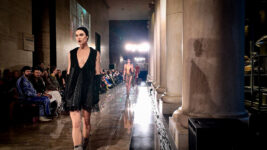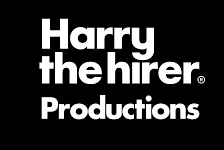LIVE
8 Feb 2023
CARMEN RE-IMAGINED
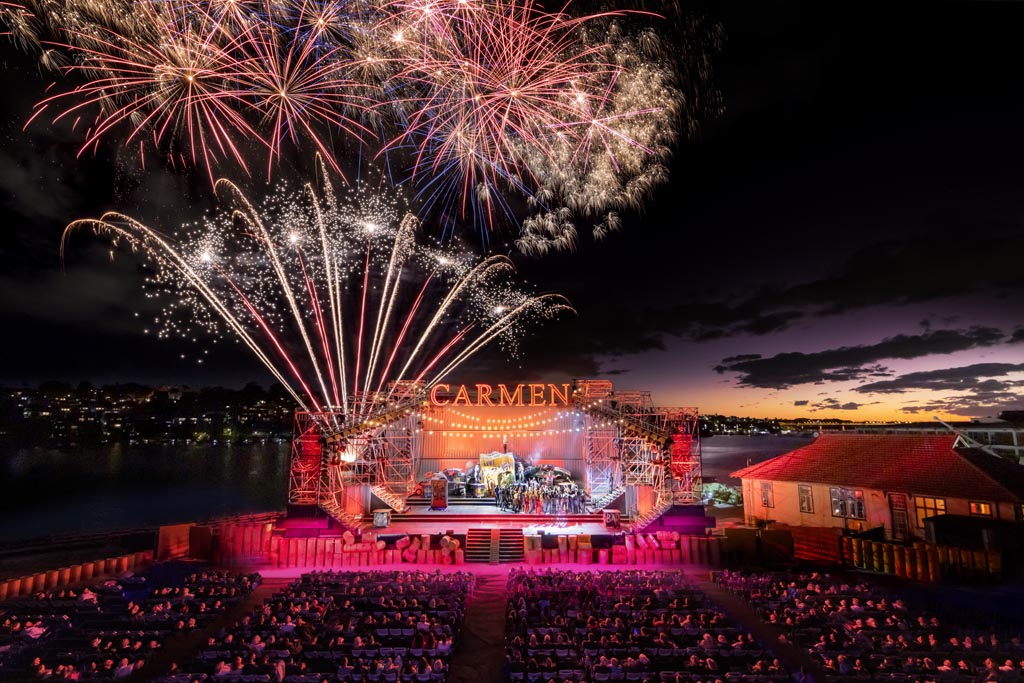
Subscribe to CX E-News
On Sydney’s Cockatoo Island
John Rayment, renowned Australian lighting designer, recently lit a contemporary version of Bizet’s Carmen on Cockatoo Island in Sydney Harbour for Opera Australia, overcoming the elements, the challenging location, and very tight time restrictions.
Director Liesel Badorrek and Designer Mark Thompson saw the industrial surroundings of Cockatoo Island as an opportunity to re- imagine this old opera for new audiences. With Cockatoo Island’s abandoned dockyards, disused cranes, and heritage buildings setting the tone, Opera Australia (OA) transformed Carmen’s celebration of society’s misfits into a rock ‘n roll extravaganza of motorbike stunts, fireworks, and bold, edgy dancing. A twelve- minute ferry journey transported the audience to a music festival vibe with pop-up bars and dining, and a gritty retelling of this classic opera.
Designing to an industrial aesthetic
John Rayment, who had previously lit Carmen on numerous occasions including outdoors for Handa Opera on Sydney Harbour in 2014 and 2017, recalls that the design of the show went through various iterations, “Opera Australia wanted to put on a show to mark the start of summer, in addition to Opera on Sydney Harbour that marks the end of summer. Cockatoo Island was an attractive venue in the midst of COVID because we could restrict and control audiences, and even have boats moored off-shore watching on big screens.” Postponed until after the COVID restrictions, the appeal of the isolated nature of Cockatoo Island shifted from the practicalities of crowd control to the unique aesthetics of the location.
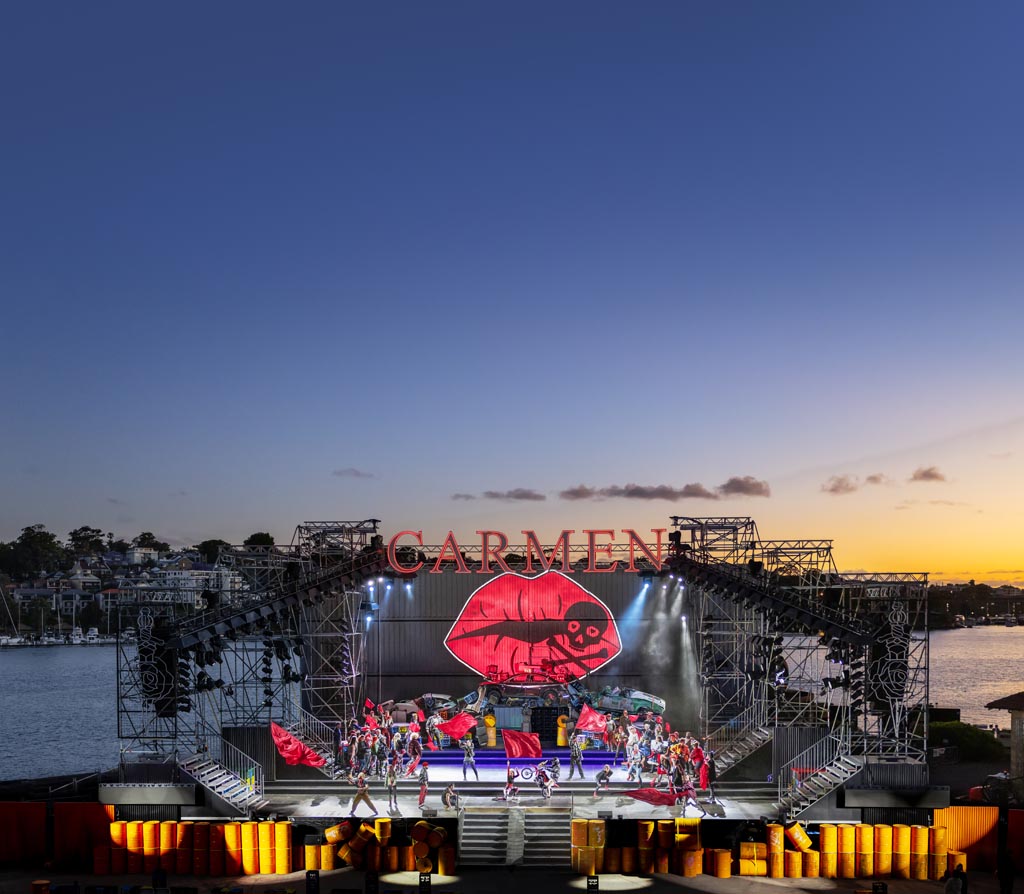
John relished the challenges posed by the shift away from Carmen’s traditional 19th century Spanish setting, “The aesthetic aims of this piece were very much in keeping with the industrial flavour of Cockatoo Island, more grunge and rock ‘n roll, and I wanted to reflect that in the lighting with a much busier design.” John looked for accents in the music and opted for overt lighting to highlight those moments, “Some of the big numbers are lit as if for a music concert, so very different to a typical opera.”
Encouraged by the intention of the director and the designer to draw in new audiences, John put the expectations of opera purists to one side, “We weren’t surprised or disappointed that some of the traditional opera goers didn’t like it. We were setting out to put the music at the design heart of the show and make that appealing to the young.”
This meant lots and lots of moving heads; “Opera Australia has over one hundred and forty moving heads in the main theatre, so the company is very familiar with the use of moving heads.
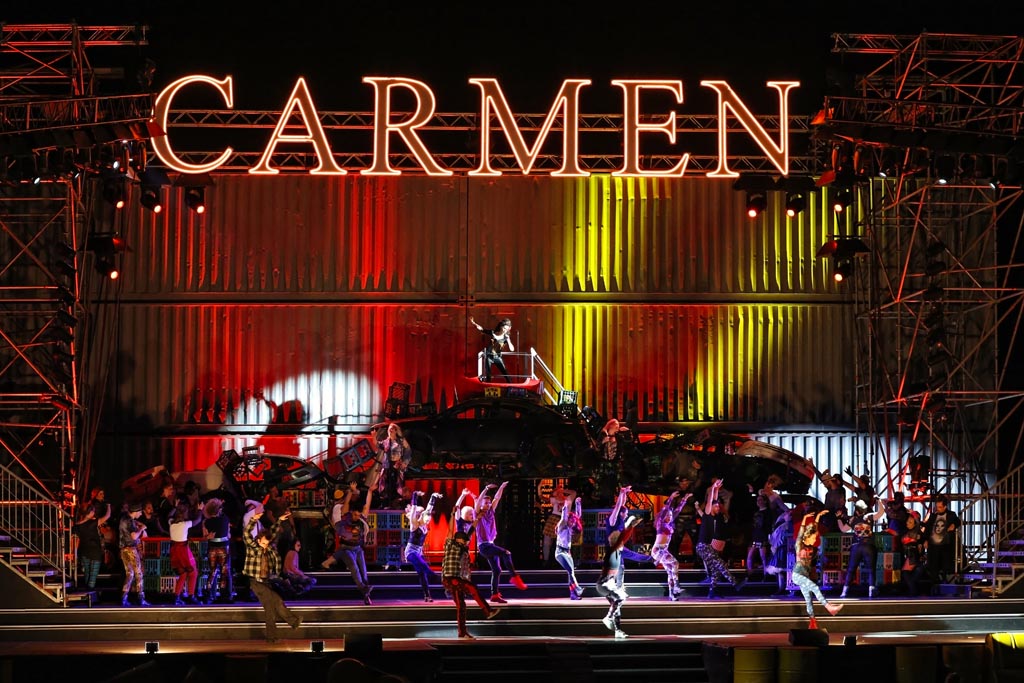
An issue was the arrangement of the hardware as it had to hang immediately adjacent to the stage on the scaffolding, so it had to fit with the aesthetic. I was very conscious of what the lighting physically looked like and the patterns and progressions we could make. It also raises audience expectations when they see all that lighting hardware. I had all sorts of aerial stuff going on in pre-visualisation. Obviously, on-site we had to contend with daylight savings so for the first fifteen minutes we were operating in dusk conditions, and the prevailing wind conditions meant that the haze we expected to hang about disappeared. As a result, a number of effects didn’t read as we’d like, and we adjusted them out into the audience so they could see the lighting more overtly.”
John used a mixture of Martin MAC Viper Performance and Viper WASH, some ClayPaky Scenius, and PROLiGHTS PanoramaIP WBX washers, “They are a great little light, really powerful.” He also used forty-eight old ACLs which became VNSPs in a nod to the grungy rock ‘n roll look and feel, “As we had an open stage with no roof, the bulk of the Vipers were arranged on panorama bars running down at an angle, for a perspective on the sides and along with other stuff arranged on the scaffold itself doing much of the work.”
John had two front of house towers with four follow spots, “I didn’t use a centre front of house tower position as we had three projectors, and it was a pretty shallow shot so I thought lights would bounce too much off the stage surface and wash out the projection.”
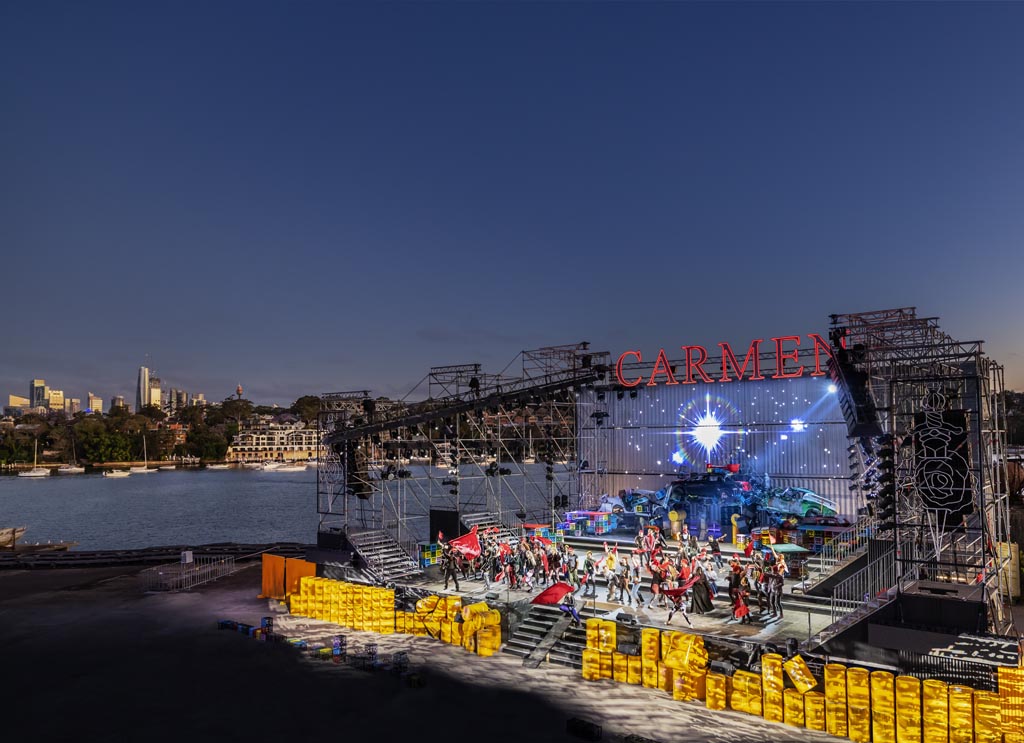
Along the front of the stage Mark Thompson placed a large number of yellow barrel drums, “They were great as they could take a lot of colour and have different personalities creating a strong frame for the picture.” Unable to use battens along the front of the stage, “We were worried about the combination of lights, motorbikes and the front row of the audience.” John used the Scenius in the front of house to light all of the front crossovers, “They are so punchy and we loaded them up with gobos, colour and animation and they still cut through creating the texture you can see on the drums.” He finished off with a lot of fusion bars uplighting the back wall and all through the scaffolding, giving the scaffolding a whole personality of its own.
Working around the tight time restrictions
Inspiring though the location was, it came with restrictions. After 11 o’clock at night there were no boats allowed and strict noise limitations, “We couldn’t stay till three in the morning doing notes and had to rely entirely on previsualisations. I’ve been using WYSIWYG since the opening ceremony at the Sydney Olympics in 2000 and on any outdoor show I always substantially pre-viz it before I hit the site. But with this being a very busy design and no opportunity to work after rehearsals, the pre-viz for this show was a lot more detailed. We did the notes from the rehearsals the next afternoon in the virtual world.” John recalls it as being quite surreal, “At one stage I was doing notes in the virtual world from rehearsals I’d seen in daylight on the site. I was actually making pre-viz notes in pre-viz!”
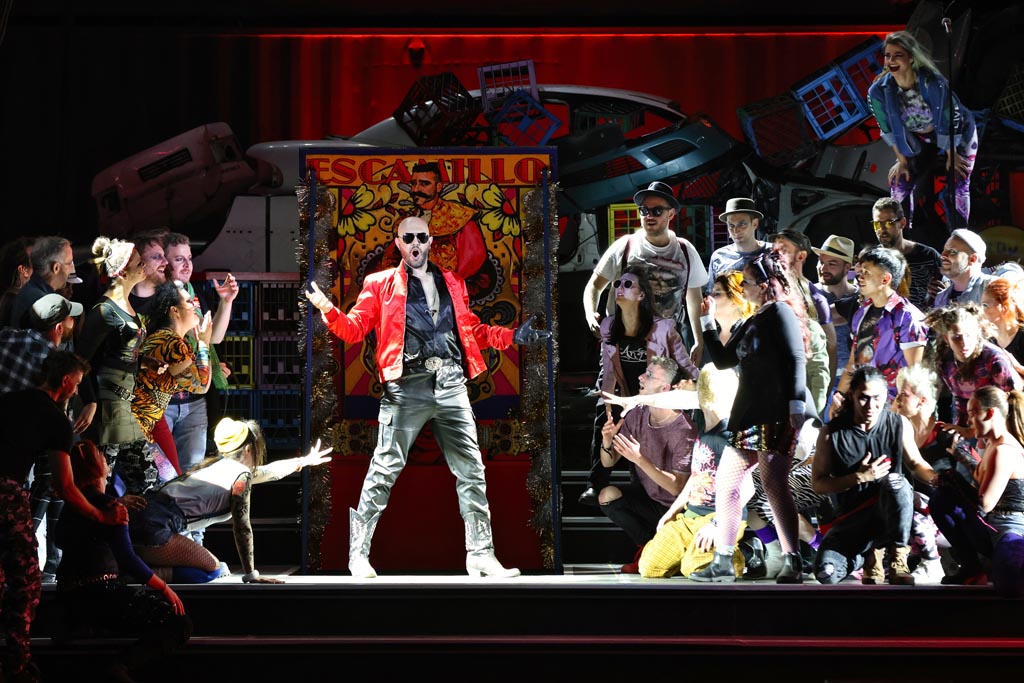
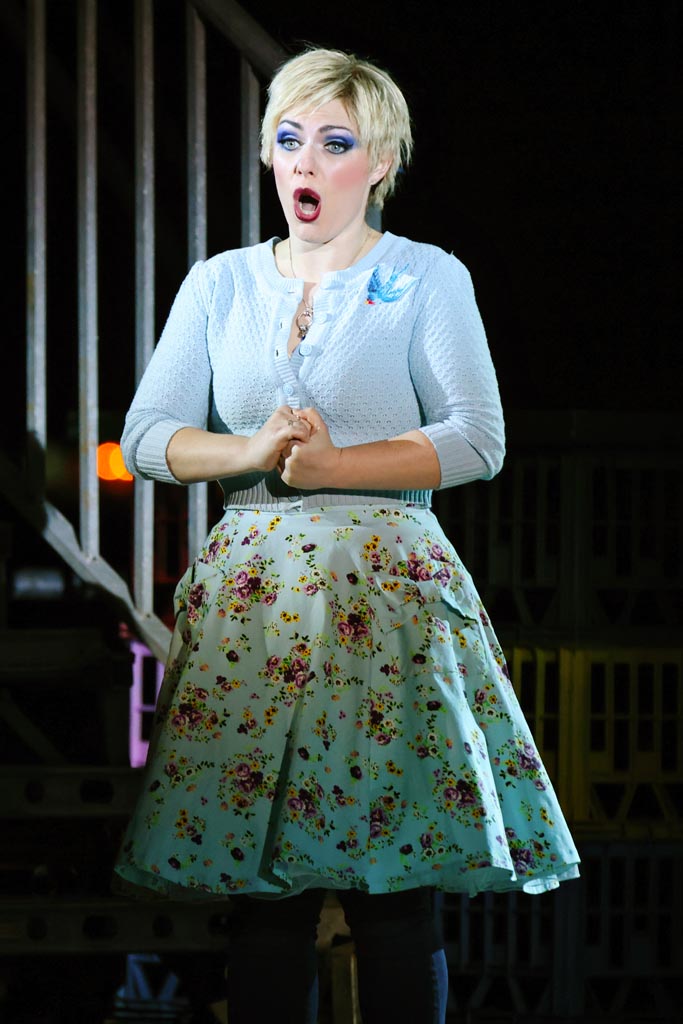
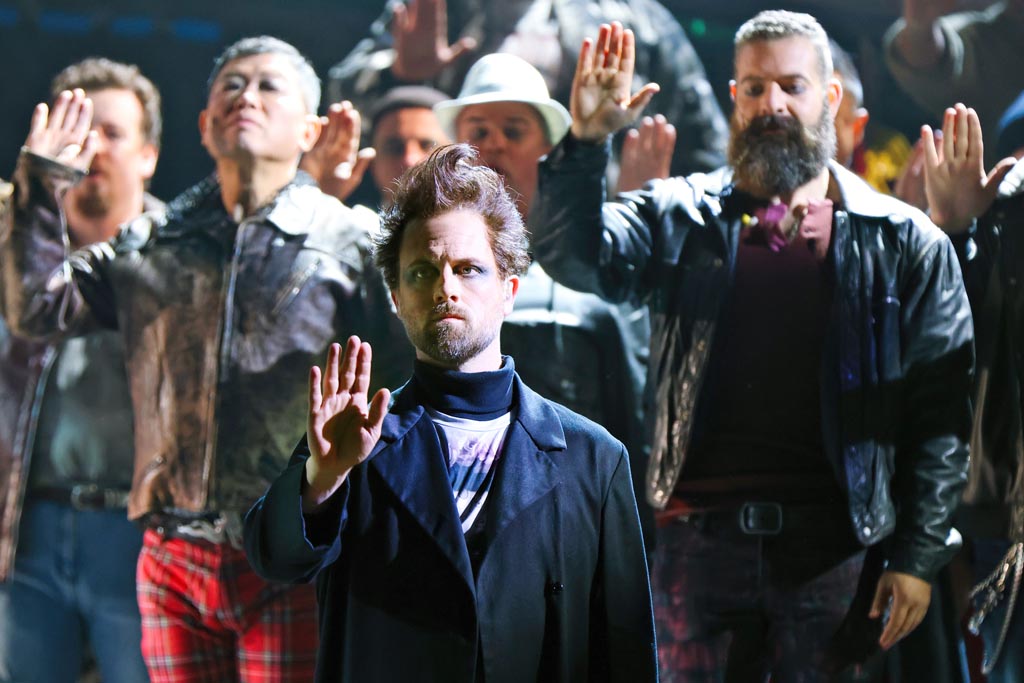
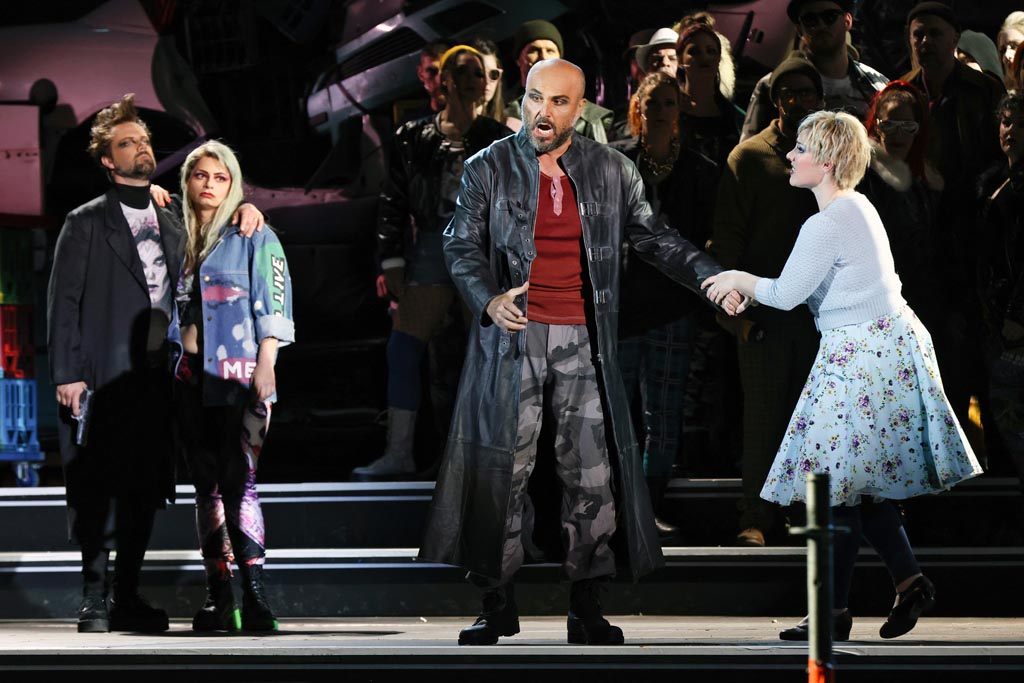
Working on an island
OA brought everything across including synced twin generators to run the lighting, “Cockatoo Island might have had massive amounts of power in its day, but now that is all tapped off elsewhere and it is very expensive. It was cheaper for the diesel to run the generators than to hire power on the island.”
The barges came over once daily, weather permitting, so as always good planning was critical, “You didn’t want to forget anything as you’d have to wait twenty-four hours.”
Lighting logistics were simplified by OA having no other performances running in Sydney, “The company’s full resources were available to us. The bulk of the stage lighting was sourced from Chameleon Touring Systems. We also used OA for labour, Big Picture did projection and Norwest Productions did the audio with Tony David Craig, the living legend, operating.”
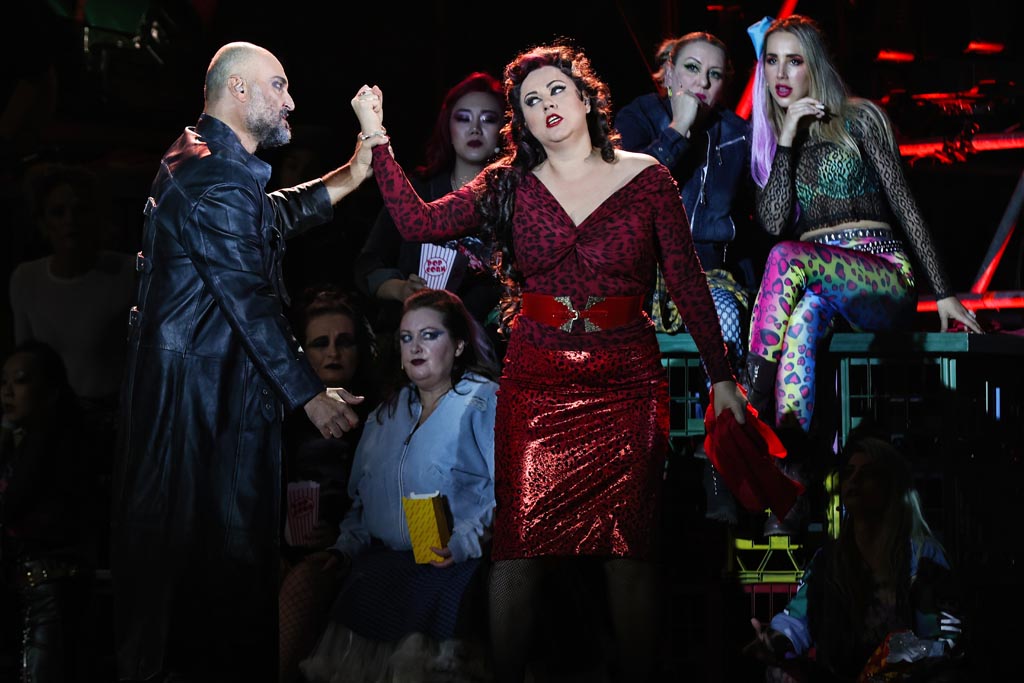
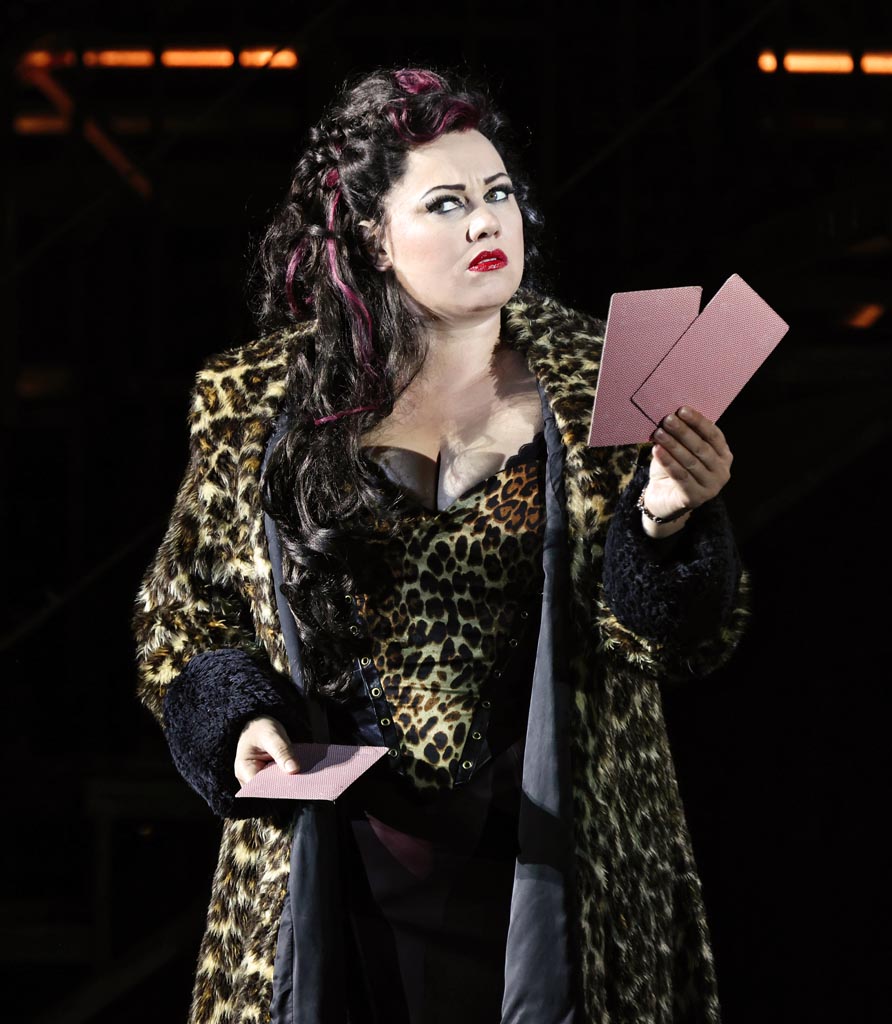
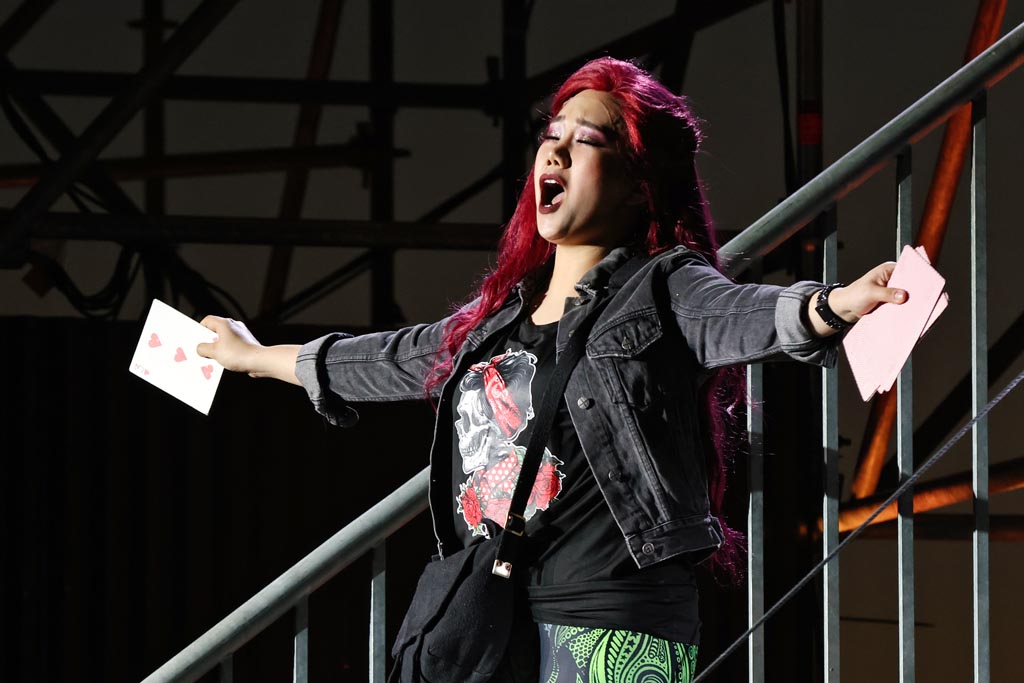
Working in the elements
The rain stayed away but the wind was a problem, “It was a killer. We had serious gusts to deal with, up to seventy kilometres an hour. Luckily the back wall was stacked containers so they weren’t going anywhere but we couldn’t send anyone up the front of house towers. It also meant barges were unable to dock and even the ferries took a couple of attempts to hit the wharf.”
The wind resulted in John opting not to use BlackTrax, “OA have a substantial BlackTrax system and whilst it’s not that it doesn’t behave itself outdoors, things like wind can make the technology more trouble than its worth. I also felt if I committed to BlackTrax and had to ditch it, I’d have no fallback, so we went for four follow spots.”
He commends his techs, “Everyone else has two weeks prior in a studio doing rehearsals and forgets that these guys have to work pretty hard to catch up. It was hairy but they coped really well.”
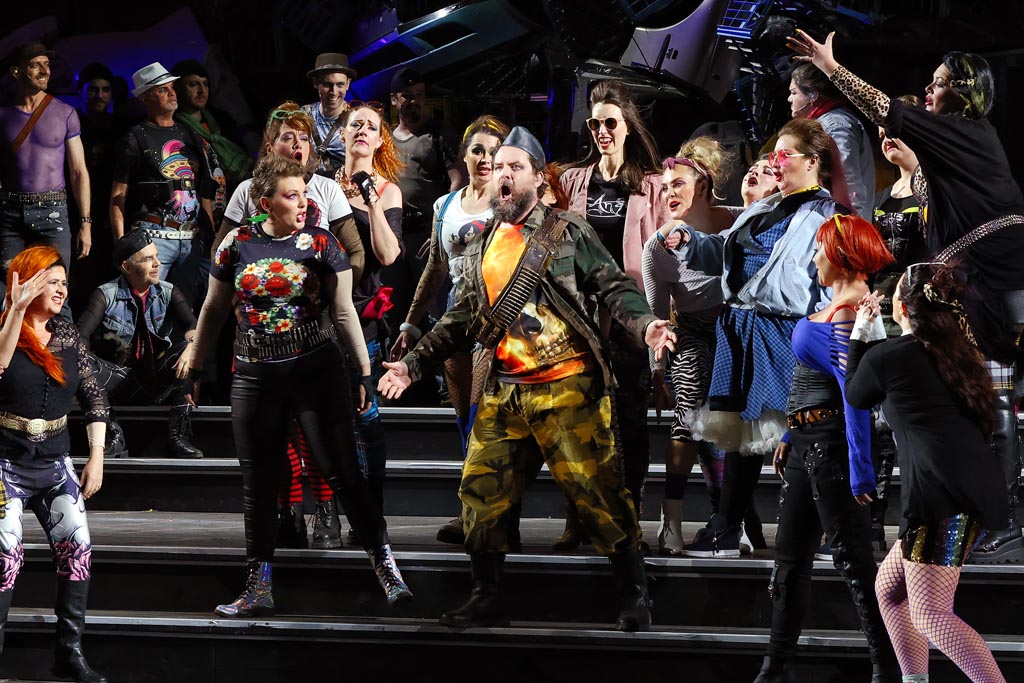
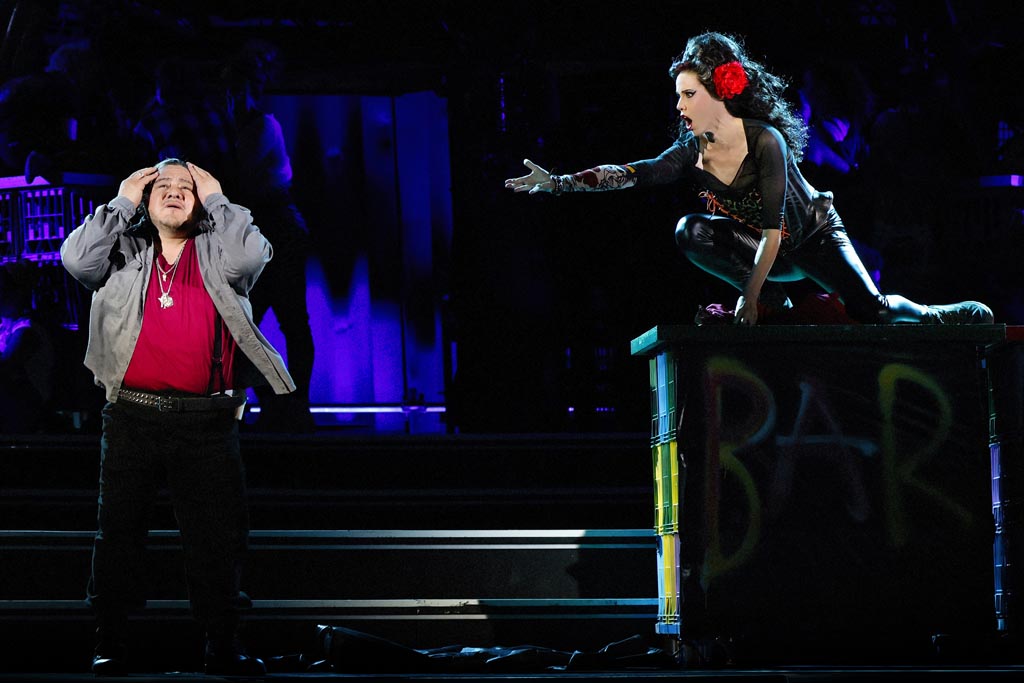
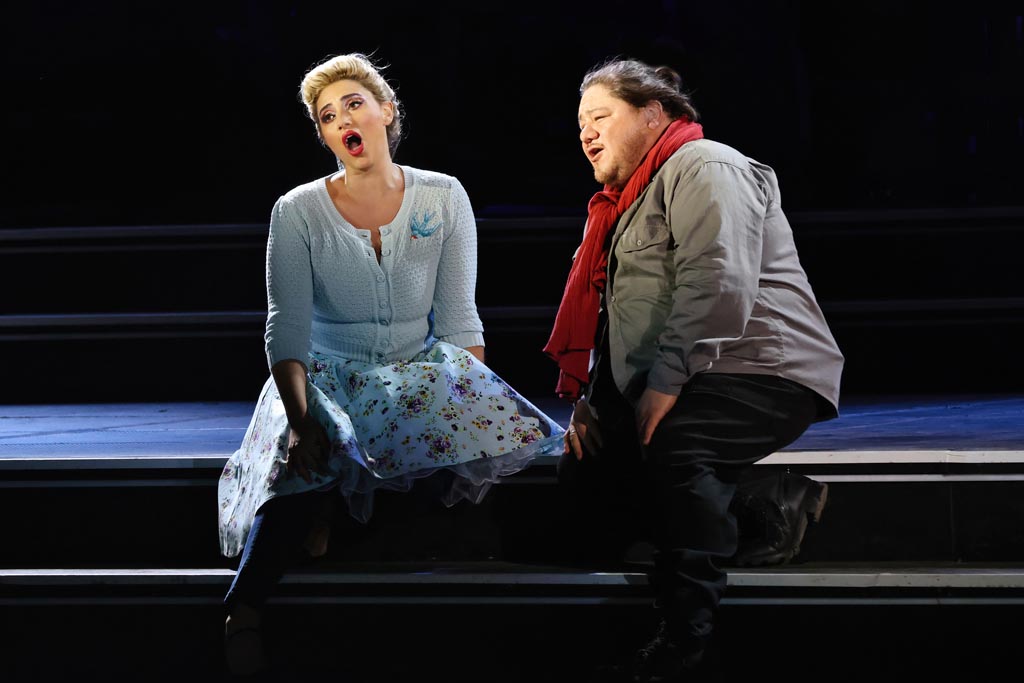
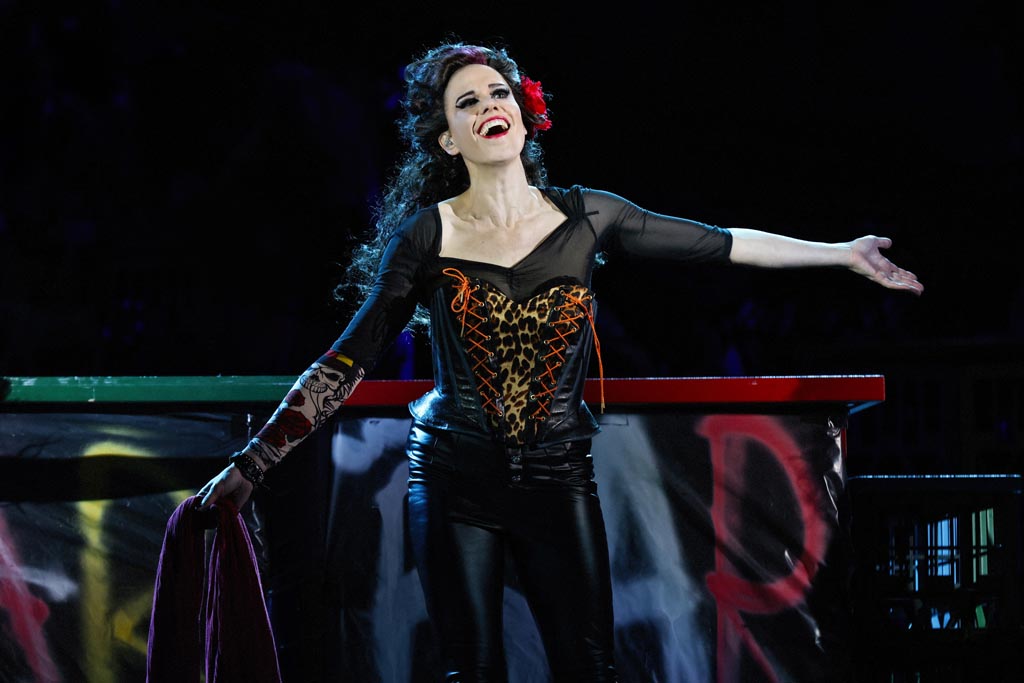
Favourite moment
Looking back John pinpoints his favourite moment, “In the second half Micaëla has a very poignant aria and I was able to use the Scenius with their punch to put a starfield gobo through all the scaffolding to match and extend the projection, so the whole picture became filled with stars which was good fun.”
Overall though John is proudest of the way the lighting developed with the plot, “We still had stuff the audience hadn’t seen by the final act. The ACLs suddenly appear bouncing along and because they are conventional the colour temperature is different. Even not necessarily registering how it was happening, the audience knew it was something they hadn’t seen before. For me keeping the visual interest going right up to the finale was very satisfying.”
THE RIG
- 48 x ACL
- 1 x ColorBlast Powercore 36 x FusionBar QXV IP
- 6 x Lancelot
- 40 x MAC Viper Performance 20 x MAC Viper Wash DX
- 20 x PanoramaIP WBX
- 4 x Rush PAR 2 RGBW Zoom 20 x Scenius Profile
Subscribe
Published monthly since 1991, our famous AV industry magazine is free for download or pay for print. Subscribers also receive CX News, our free weekly email with the latest industry news and jobs.



